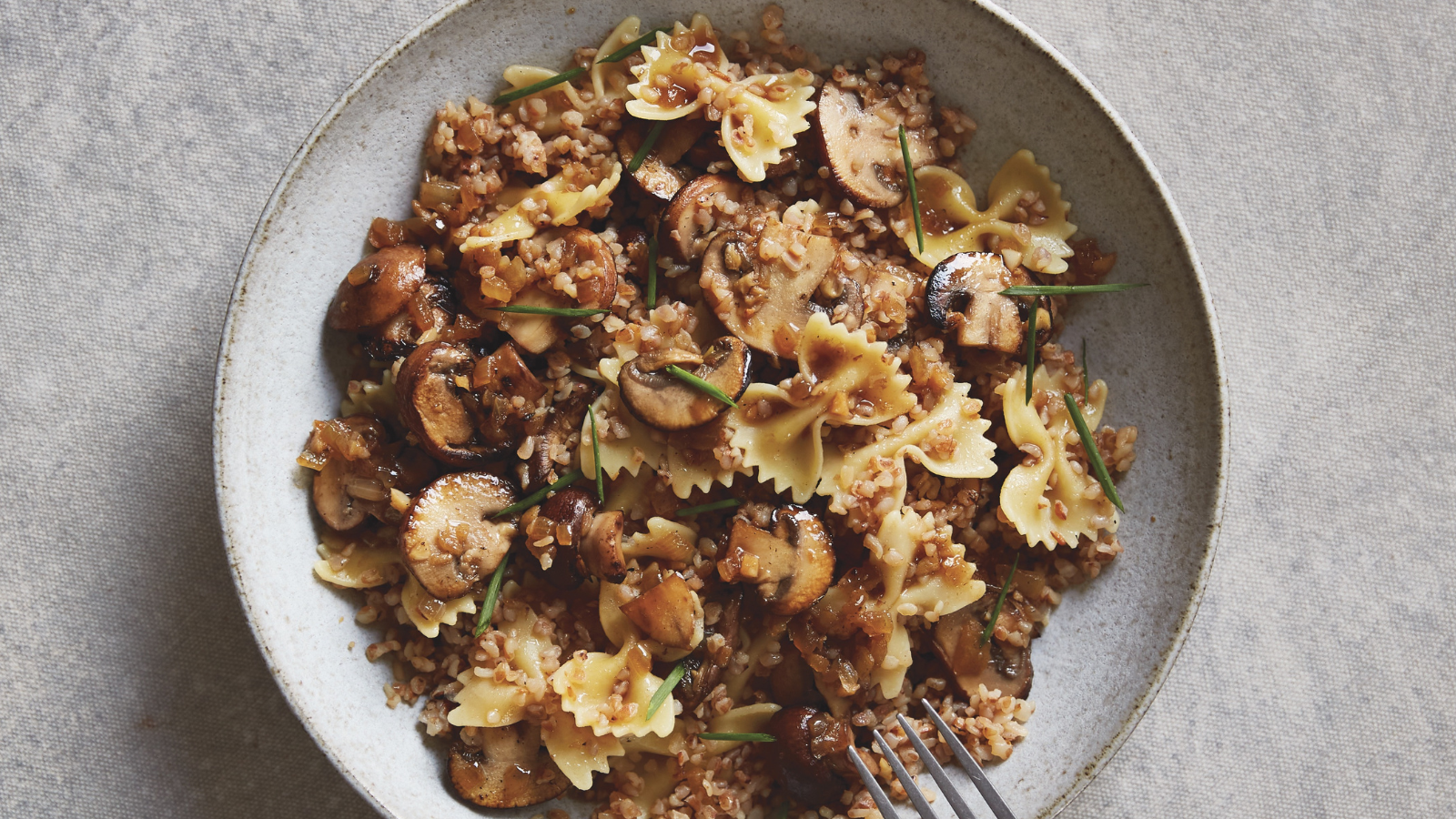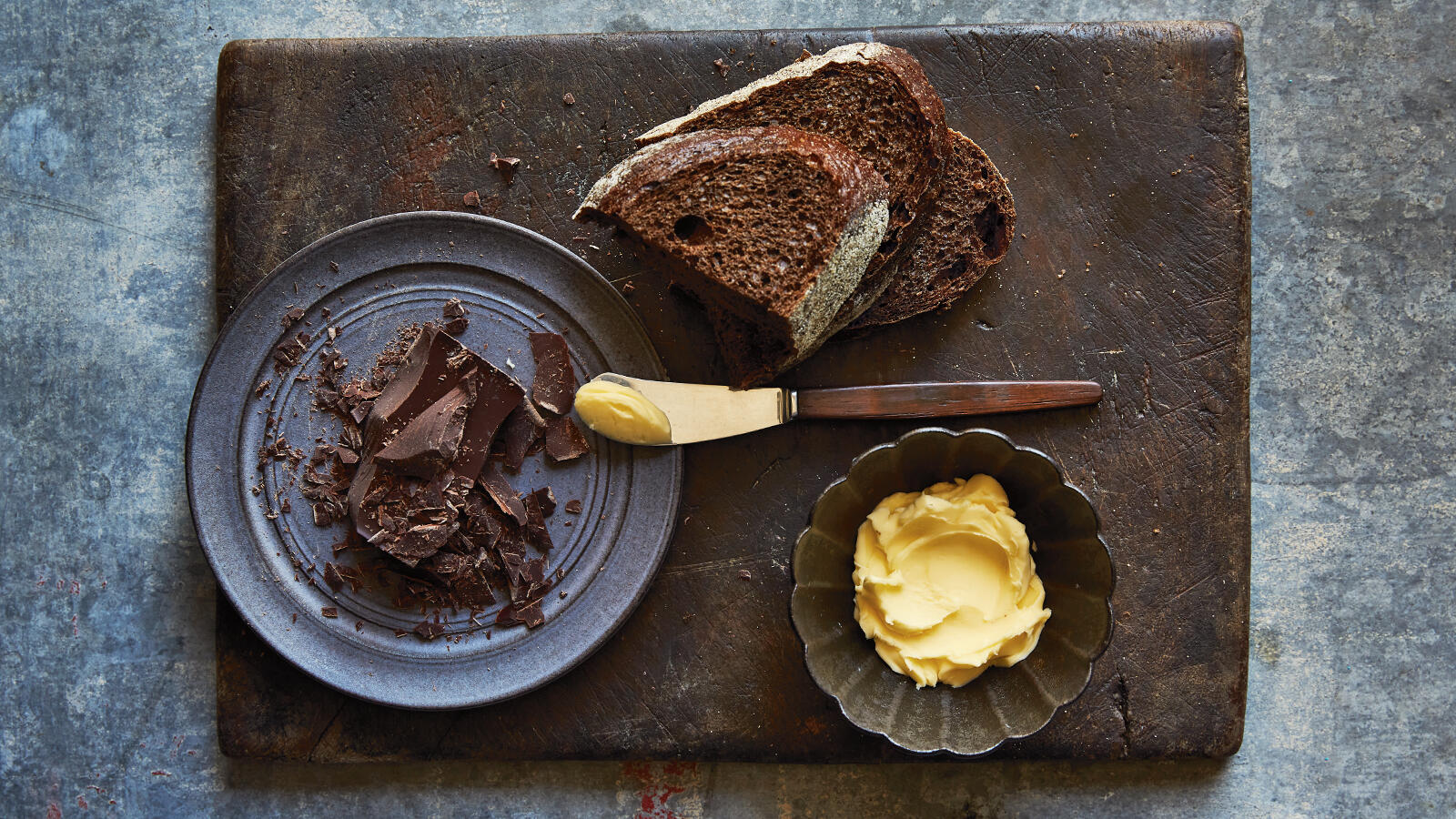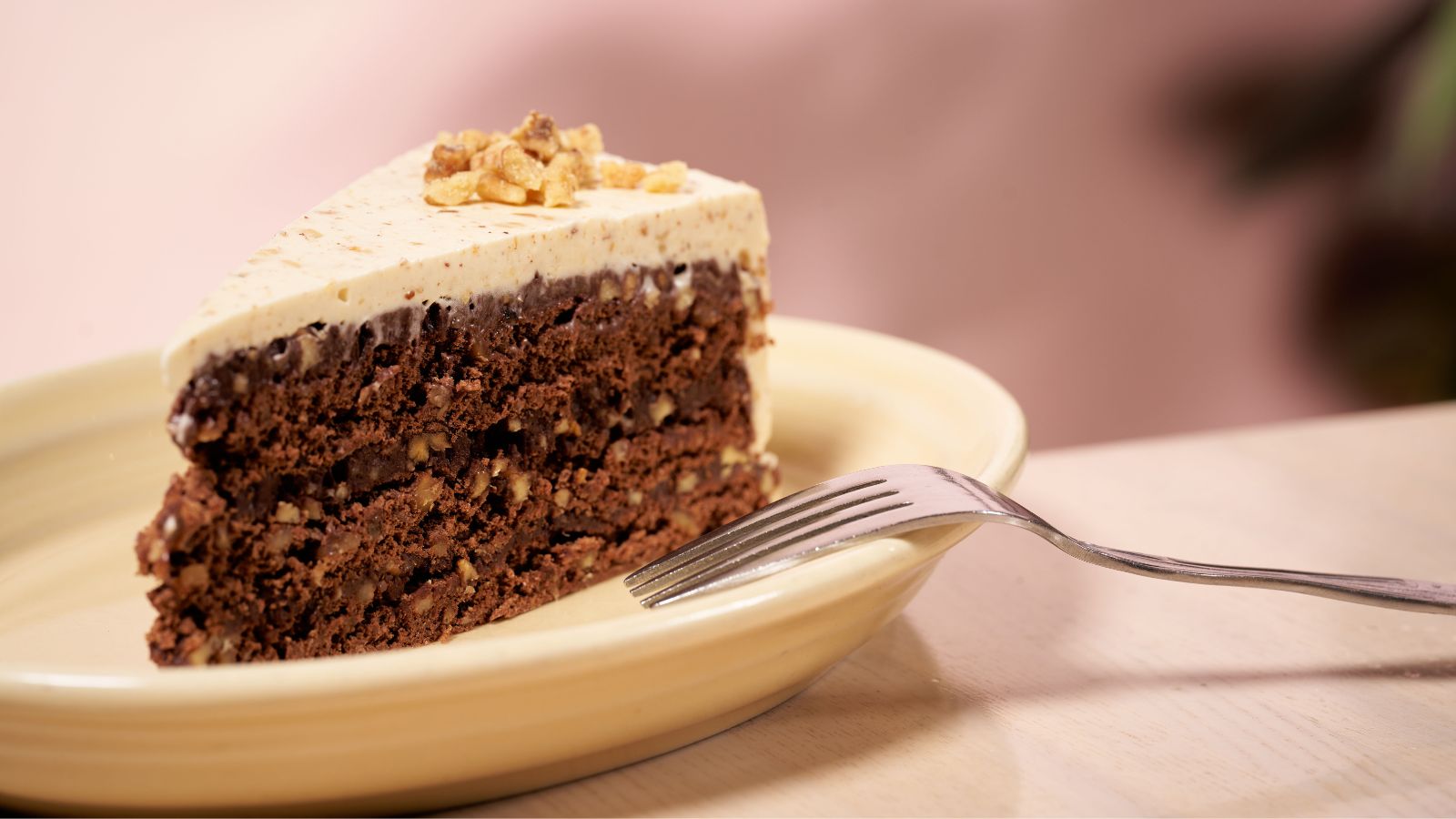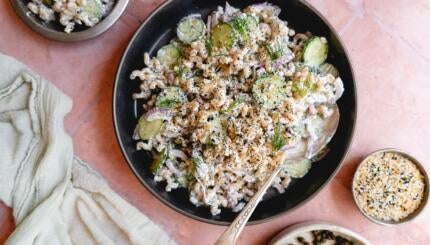Goldie Finkelstein was just 13 when she was sent to Wiener Graben, a work camp that later became a concentration camp. The youngster lost her entire family in the war, and among the things she never learned from them was how to cook. She had no family recipes and, according to her son, when she married Sol Finkelstein, also a Holocaust survivor, she didn’t know how to boil water or cook an egg.
Eventually, other survivors taught Goldie the necessary skills, and she was a quick learner. She soon became known for the copious amounts of baked goods she would provide for any occasion. Her recipes, some of which are included in the “Honey Cake and Latkes: Recipes from the Old World by the Auschwitz-Birkenau Survivors” cookbook, include cake mixes and other ingredients that wouldn’t have been used in pre-Holocaust Eastern Europe. Her whiskey cake, for example, calls for both yellow cake mix and vanilla pudding mix.
Goldie’s experience illustrates the ways in which recipes, including those we think of as quintessentially Ashkenazi Jewish, have changed over the years. Survivors lost the ancestors who passed along oral recipes. Families’ personal artifacts, such as handwritten recipes, were abandoned when Jews were forced to flee.
Most significantly, perhaps, after the war, survivors had access to different ingredients in their new homes. Sometimes that was due to seasonality, such as was the case for those who moved from Eastern Europe to Israel and had access to more fruits and vegetables year-round, including dates and pomegranates. Other times, it reflected changing tastes or newfound wealth — liver soup, pates with liver and offal were classic Eastern European dishes in the early 1900s, when there was an intention to use every part of the animal, but became increasingly uncommon. In other cases, like Goldie’s, packaged goods replaced homemade. Another survivor whose recipes appear in “Honey Cake and Latkes,” Lea Roth, detailed making noodles for Passover from the starch leftover at the bottom of a bowl after grating potatoes before the war. After the war, most people added “noodles” to the grocery list.
The Nosher celebrates the traditions and recipes that have brought Jews together for centuries. Donate today to keep The Nosher's stories and recipes accessible to all.
“Some of these recipes changed because of New World versus Old World,” explains Jeffrey Yoskowitz, author of “The Gefilte Manifesto: New Recipes for Old World Jewish Foods.” Yoskowitz and his co-author Liz Alpern work not to replicate pre-war Ashkenazi Jewish recipes, but to reclaim and modernize them. To do that, they’ve had to examine the ways in which recipes have changed.
In the Old World, for instance, almost every recipe called for breadcrumbs. At Passover, the leftover crumbs from the matzah were used to make matzah balls, leaving nothing to waste. But when immigrants in the U.S. could use Manischewitz pre-made matzah meal, then recipes started calling for it to make matzah balls.Today’s recipes for kugels with cream cheese, cottage cheese and sour cream would not have been made in the Old World, where dairy products were expensive. Again, ubiquitous cows in the New World made that “celebration of dairy” possible, Yoskowitz says.
At first, recipes may not seem like the most essential thing to recover from Holocaust survivors, but they paint a picture of what life was like before the war. It is essential to see the Jewish experience as one that is not solely as victims, and learning what people ate and cooked is part of that.
“Bringing back recipes can help bring people back to life,” says Edna Friedberg, a historian and senior curator with the U.S. Holocaust Memorial Museum. “In particular, it was women who were in the kitchen in this period, and so this is a way to make the lives of women very vivid and real for people.”
The idea is not to romanticize Eastern Europe, says Maria Zalewska, executive director of the Auschwitz-Birkenau Memorial Foundation, which published “Honey Cake and Latkes,” but to see the memories connected to togetherness, like picking fruit toward the end of the summer and using that fruit in a recipe, such as cold cherry soup with egg-white dumplings.
In addition, examining recipes gives us a sense of what role cooking and food played in trauma processing, Zalewska says. “Remembering the foods and the food traditions of their lives before imprisonment were some of the ways that survivors coped with starvation,” Zalewska adds. These are things that survivors say they are not often asked about, but when asked they report remembering dreaming about food during incarceration.
“We have quite a number of testimonies, where survivors talk about being in situations of starvation, and food deprivation and ghettos and camps and in hiding, and that dreaming about and remembering food from before gave them emotional sustenance,” explains Friedberg.
Exploring such memories have been meaningful for those survivors who were young when they lost their families.

New Orleans’ Chef Alon Shaya has been working for several years to recreate recipes from a book belonging to the family of Steven Fenves, a survivor and a volunteer for the museum. The book was rescued by the family cook, Maris, when the family was forced to flee their home on the Yugoslavia-Hungary border in 1944. The recipes are largely written without measurements, times or temperatures, and many of the ingredients are different from those used today. (Like the Fenves family, Goldie’s son, Joseph Finkelstein, says his mother wasn’t big on using measurements as we think of them in recipes today. She knew the quantity of an ingredient, for example, if it would fit in her palm.) Unlike Yoskowitz, who is looking to update recipes, Shaya has been working to replicate them as closely as possible — and has come across a few surprises.
Many of the desserts use a lot of walnuts, for example, which, of course, are also used in contemporary baking. But Shaya is using what he says are “copious amounts of walnuts” in various ways, such as grilled walnuts and toasted walnuts. The Fenves family walnut cream cake, which includes both walnuts ground in the batter and in a cream in-between the cake layers, has featured on the menu at one of Shaya’s restaurants, Safta, in Denver.
For all the recreation, and Shaya’s goal to bring the tastes of his youth back to Fenves, he says “it is impossible that a recipe in New Orleans would be the same as one in Bulgaria. The seasons are different, what animals are butchered are different, and the spices taste different.”
Indeed, place matters, Yoskowitz says. Ashkenazi food has a reputation of being terrible, he says. Take mushroom soup, for example. “There is no good mushroom soup in a deli. It is made with mushrooms that don’t have much flavor. But if you have it somewhere made with mushrooms grown in the forest, then that is going to be good soup.”
Many Holocaust survivors settled in new lands with new ingredients, and little memory of how things were made before the war. They knew they used to eat mushroom soup but didn’t specifically remember the forest-grown and harvested fungi. So, dishes morphed depending on what survivors had in their new home. In Eastern Europe, veal was plentiful, but in the U.S. and Israel, schnitzel began being made with chicken instead (a process Yoskowitz calls the “chickentization” of cuisine). And the beloved Jewish pastrami on rye? The pastrami would have traditionally been made with kosher goose or lamb. It wasn’t until Jews came to the U.S. that beef was easily accessible.

The same is true of what is likely the most iconic Jewish American dish. “Bagel and lox are what we think of as the most Jewish food. But the only thing that came over was the cured and smoked fish,” Yoskowitz says. “Cream cheese was a New York state invention. Capers were Italians. It was a completely new creation, and it became a taste associated with Jewish people.”
One of the most poignant recipes in the “Honey Cake and Latkes” book is a chocolate sandwich, a basic concoction of black bread, butter and shaved dark chocolate. Survivor Eugene Ginter remembers his mother making it for him in Germany after the war, to fatten him up after years of starvation.
Adds Shaya: “We have to continue to adapt, and I think that that is part of the beauty of it.”



